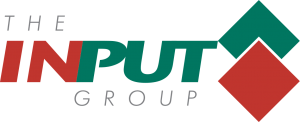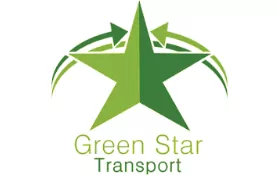By Daryn Shepherd, H&S Advisor, Kedleston Safety
Hi, Daryn here. The newest member of the Kedleston Safety team! I thought I’d introduce myself with a blog post about my general health and safety practice, which mainly involves managing health and safety within an organization that has a whole host of different areas under its umbrella. Chances are maybe your business is primarily in one area but features a small percentage of its overall operation in an industry that is completely alien to a large quantity of staff. Outside of Kedleston Safety I work for a charity that has *deep breath* a cinema and entertainment offer, a catering offer, spaces devoted to education, exhibition and outside corporate hire, a fabrication workshop, studio space and offsite operations and storage. It was initially quite daunting to take all of this on at the very start of my journey into professional health and safety! However, over the years I have learned quickly how to make such a large workload manageable and I’m going to use this space to highlight some of the potential hazards others in similar positions might come across; and how Kedleston Safety might help. Whether it be i) ensuring compliance after accepting that there is more depth to your operation than you first thought or ii) understanding the specifics in an industry where Health and Safety is easily forgotten about; I’m here to help!
Understanding the hazards apparent in your business is first and foremost. I learned quickly that the more diverse the operation, the greater the quantity and scope of potential hazards. I like to start off by doing a top down survey of the physical building. Start at the roof, if there is access, and work my way down throughout the building back to the very place I first arrived at. I make detailed notes on who accesses each area and the frequency of access, the activities/work that goes on there, immediate hazards I can see at a glance, or indications of potential future hazards. You can tell a lot from the fabric of the building and it’s always handy to have any original manuals and floorplans to hand if they are available. Also, if there is anything that blindsides me, or that I don’t have explicit experience of, I’m going to want to make a note of what it is and do my research before assessing what needs to be considered when putting together a safety protocol! I’m able to use information gathered in this manner to start creating a tree of information that will in future sit beside the organization chart as a guide to risk management for all. It’s important to document everything; from accident, incident and near miss reports to regular inspections; starting off with an easy to digest chart is a great way to get the ball rolling with this.
From that assessment I’ll be able to make a detailed plan on where regular checks and inspections need to take place. Even in this digital age; having physical documentation for areas seldom visited by your regular staff is a must; as it shows that you have taken the time to visit the space. You don’t need to be a health and safety expert to know when something has gone wrong or has the potential to go wrong so having immediate documentation of feedback from staff goes a long way to ensuring a proactive attitude toward health and safety! This is usually the best way I have found to get the ball rolling with introducing new procedures and standards as it is usually quick to implement, gives ownership over monitoring to a range of staff and sets a standard by which harder to implement documentation can be measured against.
Health and safety is nothing without support from the highest level of management; for certain companies this will be the managing director, or a board of trustees. Getting senior management support ensures that good practice trickles down the company tree. By setting time aside every few months for safety tours with rotating board members (related to their business and/or personal interests) is beneficial to everyone. Its sadly true that in some industries the interaction between the CEO and Health and Safety is simply signing a policy that someone else has written, and businesses who continue to operate like this are setting a poor example for their staff en-masse. This is especially necessary in places of work with many different and diverse arms under one or more roofs; it keeps health and safety unified across the board as much as possible! It is never beneficial to the organization to have all of the health and safety to be the responsibility of one individual, we as Health and Safety practitioners should be meeting with and encouraging heads of department to have a greater concern and understanding of the particular health and safety risks and legal duties for their particular areas of concern within the organization. Spreading the load means less stress all round!
It serves everyone well to incorporate health and safety training and awareness into pre existing operational structure of the organization. Most places of work I have employed in of have all featured a general staff meeting with monitored attendance. This is an excellent place to introduce simply health and safety concepts; perhaps the more general areas such as manual handling, lifting operations, work at height etc. And with an attendance list, you know exactly who has received this training and when it will need updating.
Something unique to cinemas and some other venues is that they will be, by their very nature, completely devoid of natural light. If something goes wrong and power is not available then they become very dangerous indeed. There is perhaps a myth that emergency lighting is only lighting that indicates and exit, rather it is used to allow people to navigate a clear path to a final exit door. With the potential for large public presence in certain spaces it is imperative that there is an ample supply of emergency lighting across the space, and that it is regularly tested with any failures reported. In my experience to have a completely separate, dedicated supply of emergency lighting for spaces like this, separate from the rest of the building. On the flip side to this, it pays dividends for organisations like these to have an awareness of Portable Appliance Testing. Its always worthwhile researching the type of equipment that needs to be regularly tested and the frequency of testing required.




